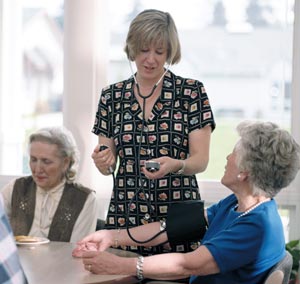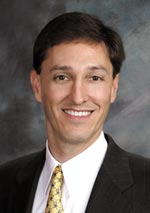|
A FULLY FUNDED PRODUCT FOR NURSING HOMES American Safety Insurance establishes cell captives for individual insureds By Phil Zinkewicz
By many accounts, the property/casualty insurance marketplace today is “softening.” Those quotes, of course, indicate that the softening depends upon whom you talk to and what lines of business are being discussed, and also because there are indications that various forms of the captive insurance company concept, the primary alternative to traditional insurance, are alive and well, not usually the case with an overall softening market. The captive insurance company movement really got its start back in the late 1970s, when risk managers of multinational corporations became frustrated with the vagaries of insurance company pricing and coverages being offered. These multinational firms began forming offshore captive vehicles for self-insurance purposes and then later turned them into third-party underwriters to satisfy Uncle Sam. Captive insurance company growth surged during the hard market of the 1980s and then held ground during the soft market of the 1990s. Now it appears, even with the much-heralded softening market, that the captive movement is undergoing yet another resurgence. A recent Reuters report said that many of the world’s biggest companies are choosing to cover their largest risks themselves because insurers have become too costly. This observation came from Aon Corp., the world’s second largest insurance broker and the world’s largest manager of captive insurers on behalf of corporate clients. The Reuters story said that there has been a “big jump” in the amount of risk that companies have retained through their captives since the September 11 attacks sent premiums soaring in the traditional insurance market. According to Aon, many multinational companies have chosen to set up their own insurers rather than continue to pay what they regard as inflated premiums being demanded by conventional insurers. Aon said that gross premiums written by the captives it manages have jumped to $20.2 billion in 2004 from $12.1 billion in 2002. Aon went on to say that, though the cost of coverages charged by insurers has begun to fall—hence the perception of a softening insurance marketplace—insurers have continued to exclude many risks from their policies since the attacks, which cost insurers around $45 billion. Stephen Cross, chief executive of Aon’s Captive Services Group, said: “Prices have softened across most lines of insurance. But terms and conditions have not really gone back to where they were before the price hikes.” Cross said that, for example, before the September 11 attacks, a big company may have had to pay the first $5 million to $10 million of each big property claim—such as one of their factories burning down—before the insurance cover kicked in. Now, it may have to pay the first $20 million to $25 million. The result has been that many companies still cannot get the amount of coverage they want at a price they can afford, said Cross. Companies, therefore have chosen to self-insure their risks to overcome this, he said. The same scenario appears to be holding true in the commercial mid-market, at least in some lines. Throughout the years since the captive movement began, it has remained, for the most part, the province of the large, multinational firms. Smaller firms too often have not had available the risk management expertise necessary to put together a sophisticated self-insurance program unless through a rent-a-captive concept.
One insurance group, however, Bermuda based-based American Safety Group of Companies (“American Safety Insurance”) realized back in 1986 that smaller commercial insurance buyers also resent having to pay for what they perceive as costly insurance with limited coverages, and recently developed a product where firms that believe they are being ill-served by the traditional market can self-insure their exposures via a self-funded “cell captive” mechanism. For American Safety Insurance, the market for their self-insurance products had its roots in the construction industry during the hard market of the mid-1980s. “Contractors were finding that the costs to insure against environmental hazards had become prohibitive and that the coverages available were minimal at best. American Safety Insurance was formed to respond to this underserved market by way of forming an offshore captive,” says Steve Crim, American Safety Insurance president. “Our mission is to provide innovative insurance solutions for specialty risk in underserved markets.” Since 1986, American Safety Insurance has expanded its products to various industry segments and, most recently, began moving into the nursing home business—yet another arena currently underserved by the traditional insurance community, according to Crim. But for nursing homes, American Safety Insurance is employing a fully funded policy utilizing a segregated cell captive. The nursing home business and other types of elder care facilities are a burgeoning market and all signs point to the continuance of that growth. According to the Department of Health & Human Services’ Administration on Aging, the older population—persons 65 and older—numbered 35.9 million in 2003, the last year for which statistics are available. They represented 12.4% of the U.S. population, about one in every eight Americans. By 2030, there will be about 71.5 million older persons, more than twice their number in 2000, and they will comprise about 20% of the population. “About two years ago, we began receiving requests from our brokers to develop a self-funded product for nursing homes,” says Scott Davis, director of Alternative Risk for American Safety Insurance. “Nursing home insureds were complaining that coverages were either unavailable, the prices too high and the claims handling processes of insurers inadequate. Too often insurers were settling claims too quickly or for amounts the insured believed were excessive. We decided to explore the matter.” One of American Safety Insurance’s brokers, Doug Deitch of Keystone Risk Partners, located just outside of Philadelphia, approached American Safety Insurance with an idea for a self-funded product for nursing homes. “The idea was to provide an opportunity for nursing homes to self-insure and still meet certain state and licensure requirements,” says Deitch. “Keystone already had a 10-year relationship with American Safety Insurance, so we knew they would be able to respond. They took the self-funded concept and refined it into the product they are offering nursing homes today.” Crim adds that the demand for this self-funded product is driven by health care facilities that are required to carry general and professional liability insurance for regulatory compliance, but desire more control over the cost of insurance and claims handling than currently afforded by traditional markets. “Our fully funded product, which was designed specifically to meet this type of need, is available to all types of elder care living facilities, but nursing homes are the largest market for the product thus far.” Davis describes how a fully funded nursing home program works. “A fully funded policy for nursing homes consists of a combined general and professional liability coverage form where the named insured collateralizes the policy aggregate limit. The coverage form is ‘claims made,’ with indemnification of the named insured for covered claims in lieu of the insurer paying on behalf of the named insured. “So, for example, a nursing home that is required to carry general/professional liability insurance with a total aggregate limit of $100,000 could purchase a fully funded policy from American Safety Insurance as an alternative to the traditional insurance market,” he explains. “In this example, the nursing home would post collateral in the form of cash or a letter of credit to secure American Safety Insurance for the policy limit, which is $100,000. American Safety Insurance would issue a claims-made indemnification policy to the nursing home with an aggregate limit of $100,000, in exchange for an administration fee. Davis continues: “This mechanism allows the nursing home to control the claims handling process, which ultimately allows it to control its insurance cost. At the policy expiration, any collateral that is not needed to cover outstanding liabilities can either be refunded to the nursing home or utilized as collateral for the renewal policy.” As further protection for the insured, Crim says that the self-funded concept calls for the establishment of an offshore “cell” captive. “A segregated cell captive is a type of insurance captive where individual accounts are established for each insured,” says Crim. “This specialized type of captive provides legal separation of assets and liabilities for each insured within the captive, thus preventing the deterioration of assets of one insured as a result of adverse loss experience from another insured, which can occur under the typical structure for a group captive or rent-a-captive. Under this structure, each account or cell acts as a reinsurer to the applicable policy issued by American Safety Insurance. The reinsurance risk that is assumed by each cell or account is secured with the collateral posted by the policyholder.” Crim says that American Safety Insurance performs all administrative functions under this program, including the underwriting, policy issuance and accounting. “The program is accessible by independent brokers,” he says. “American Safety does not appoint agents, but this product is available to retail brokers who meet our quality standards.” The Atlanta-based Thomco, a managing general agency that specializes in assisted living business, is a source for American Safety’s nursing home product, according to Crim. “Our product is flexible,” he says. “It can be easily adapted to other types of elder care facilities that agencies such as Thomco specialize in. So far, the demand for this product has only been in the area of nursing homes. But there are mental health facilities, facilities for the developmentally disabled, independent living facilities, assisted living facilities and continuing care retirement communities (CCRCs)—all of which can benefit from this product.” Deitch of Keystone goes even further. “The fully funded concept can be applied to any policy with an aggregate policy limit. That might mean product liability exposures, physician malpractice risks, hospital malpractice risks, etc.” However, at present, it appears that the nursing home industry is the market where there is the most demand. Says Crim: “The insurance market for nursing homes continues to be one of the most difficult markets in the industry. We continue to receive complaints that insurance rates are too high, the coverage available too restrictive and that the claims handling offered by traditional markets is often substandard. While coverage continues to be available in the traditional markets, nursing homes are continuing to consider alternatives such as the fully funded product we offer.” * |
||||
|




